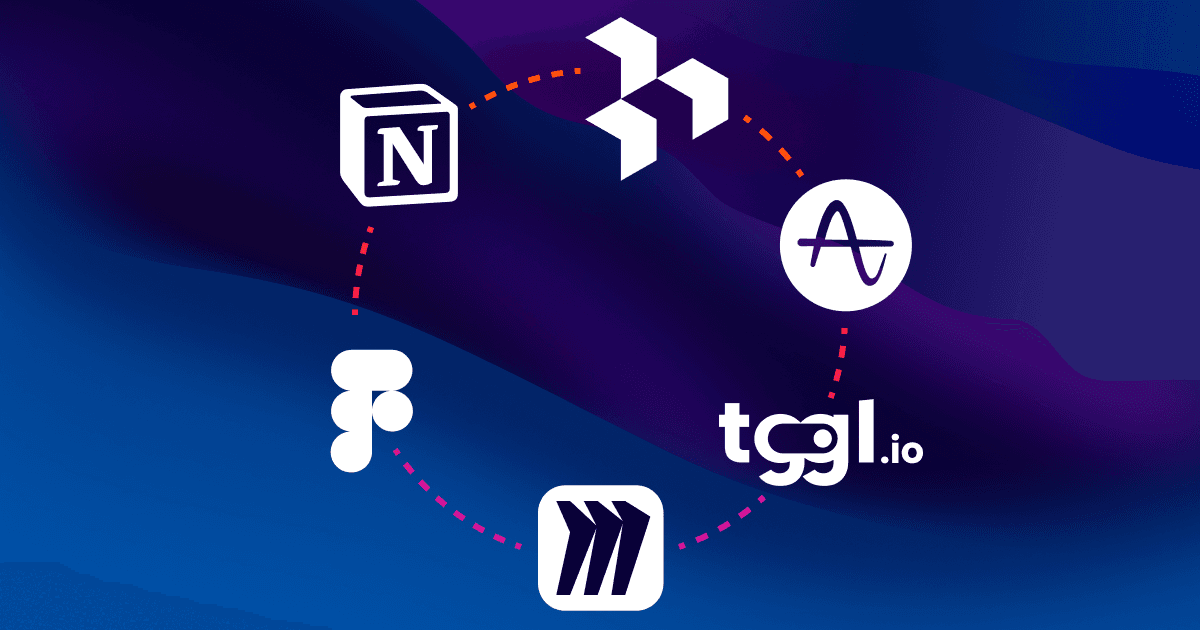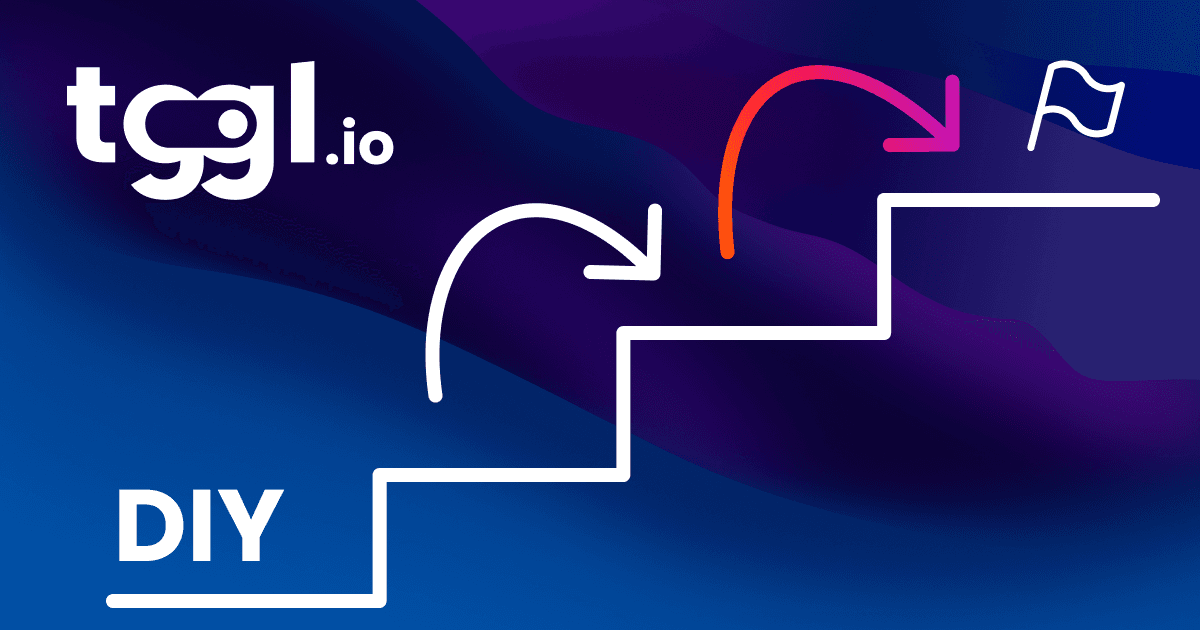5 best feature-flag tools for Java
Feature flags have become an essential tool for Java developers, enabling smoother rollouts, A/B testing, and rapid experimentation. With various options available, choosing the right feature-flag solution can be daunting. In this article, we’ll dive into the top 5 feature-flag solutions for Java developers, comparing their pricing, ease of use, and key features to help you make an informed decision.
 Our top pick#1 Tggl.io
Our top pick#1 Tggl.io
We start this list with Tggl, probably a great choice overall for its ease of use and quick integration with Java (a single API call).
Features
Tggl's entry-level plan covers all the fundamental features you need to get started with feature flagging, making it ideal for small projects or teams on a budget. It provides the core functionalities like toggling features on and off, conducting A/B tests, and scheduling feature rollouts. Ensuring you have everything necessary to manage feature rollouts efficiently.
When your project scales or demands more sophisticated capabilities, Tggl’s premium plans introduce advanced features for collaborating like reviews, technical debt management, and server-side flags evaluation, giving you the flexibility to grow with the service.
Ease of use
Tggl stands out in our comparison due to its user-friendly design, which places it at the top of our list. We found the interface to be intuitive, and the setup process is quick. To provide a clear example, we recorded a brief video demonstratinghow to activate a flag for 20% of French users. We created similar videos for each service in this article to ensure a fair comparison of their ease of use.
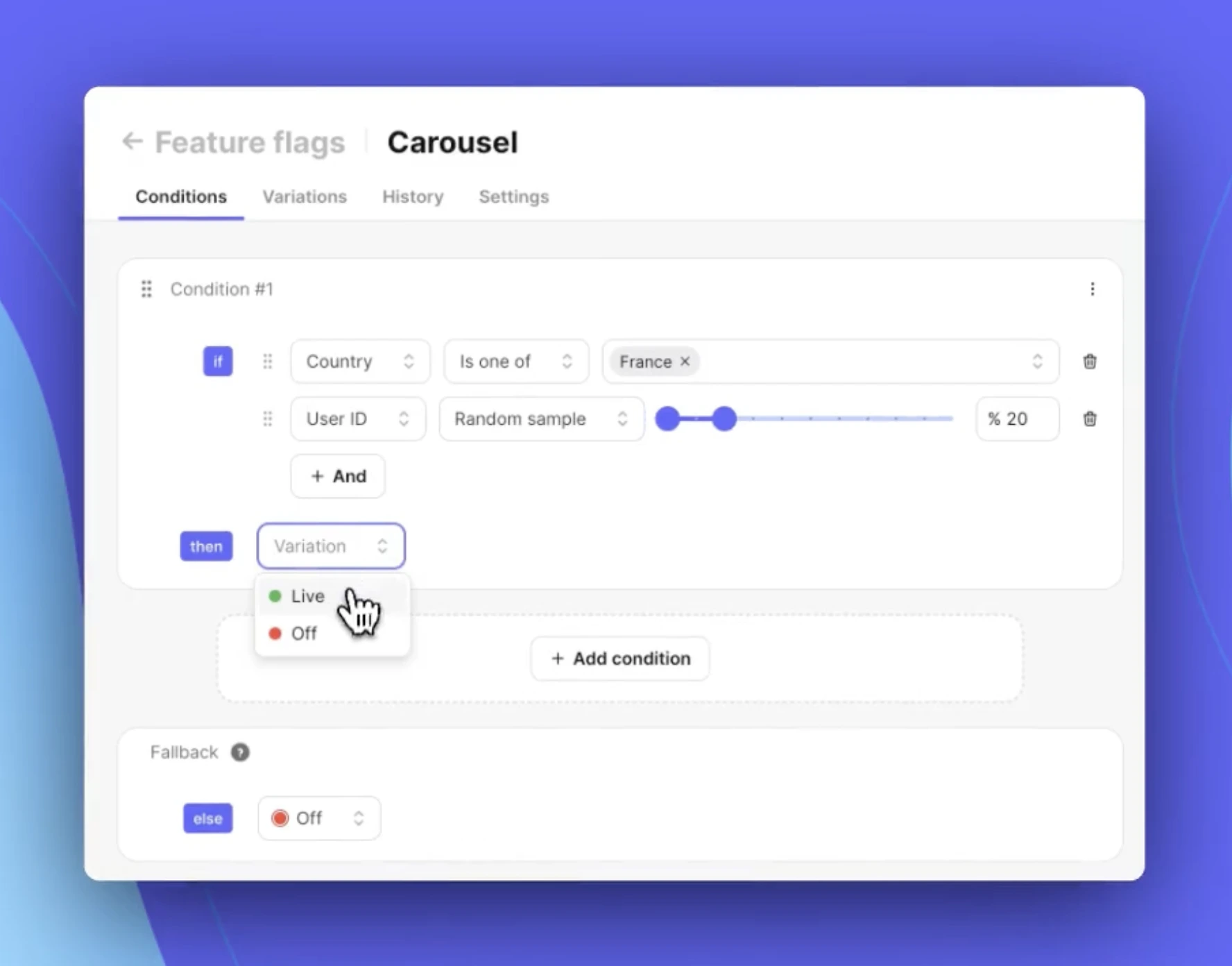
The video demonstrates how easy it is to use Tggl, highlighting its user-friendly nature. To further assess its usability, we collected user ratings for both ease of use and setup time. These ratings provide real-world feedback from developers who have worked with Tggl.
- Setup time: 4.8/5
- Ease of use: 4.9/5
Pricing
To conclude, Tggl is the least expensive option featured, beginning at €180/yr for 5 seats. For smaller teams, the pricing is based on both seat count and request volumes, ensuring budget control. Meanwhile, larger teams can take advantage of a plan with unlimited seats and only incur costs based on request volume, offering a flexible and economical choice as their needs evolve.
- Price for 5 seats: €180/yr
- Price for 10 seats: €530/yr
 #2 Unleash
#2 Unleash
Unleash is the next feature flagging tool we'll explore. Designed with Java developers in mind, Unleash offers a range of functionalities that make it a compelling choice. In the upcoming sections, we'll delve into its features and pricing to better understand its value.
Features
Unleash provides a comprehensive set of basic features that make it a solid choice for managing feature flags in Java projects. With its core offerings, you can easily toggle features on and off. These essential tools are available even on the lower-tier plans, making Unleash accessible to teams that need robust feature flagging capabilities without breaking the bank.
However, for those seeking more advanced functionalities, you'll need to opt for one of the more expensive plans.
Some other features of Unleash are only available on the highest plan and will require a call with a sales representative (eg. unlimited projects, reviews, custom roles, unlimited environments, unlimited seats and flag scheduling).
Ease of use
To showcase Unleash's UI, we’ve prepared a short video demonstration. In the video, we’ll walk you through the process of releasing a feature for 20% of French users. Unleash may not the most user-friendly tool from this list, but at least it gets the job done fairly quickly.
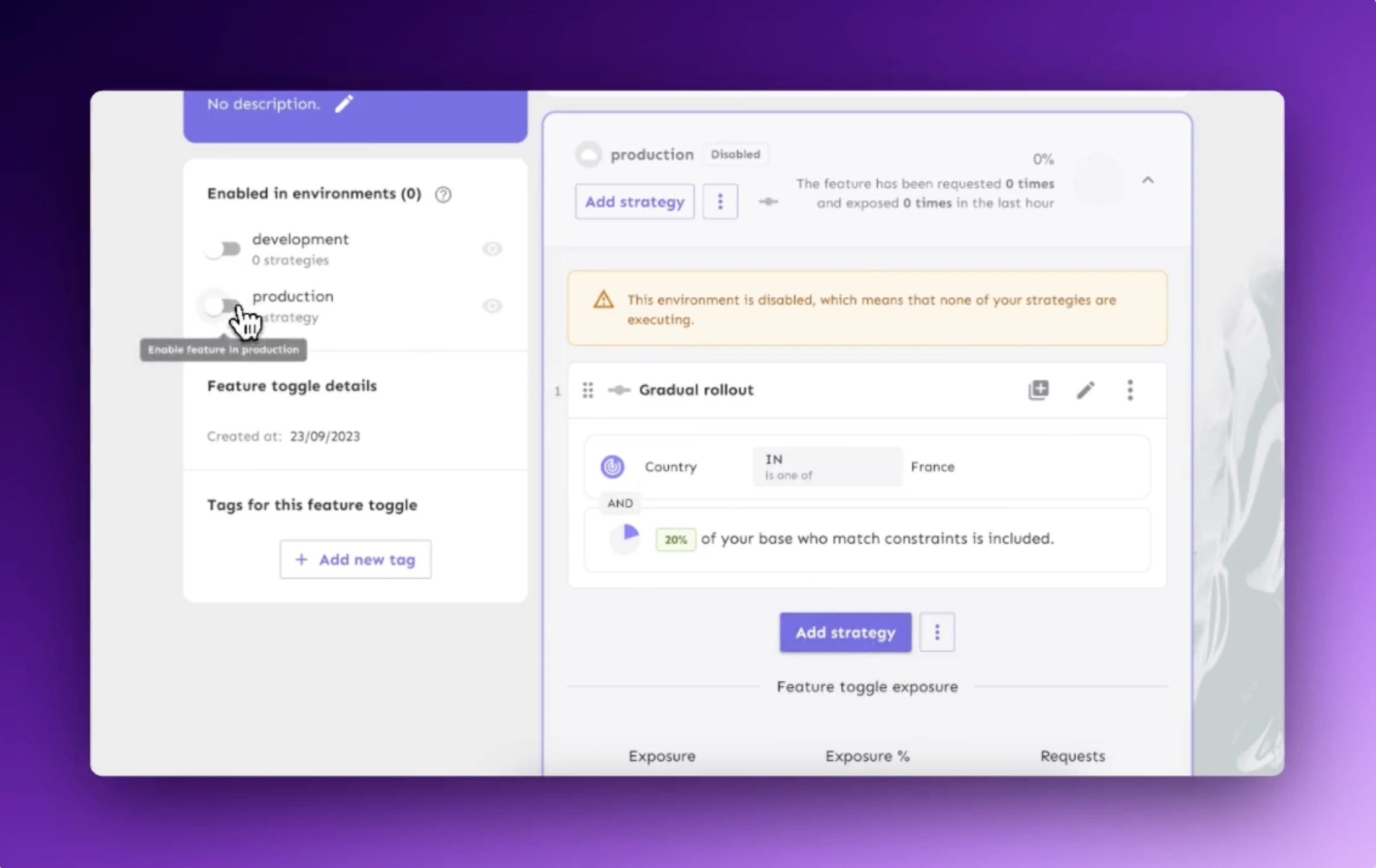
To give a better sense of how Unleash performs in real-world use, we’ve gathered user ratings for two key areas: ease of use and setup time. These ratings, with higher scores indicating better performance, provide insights into how quickly teams can get started with the platform and how intuitive it is to use in day-to-day operations. Let’s take a look at how Unleash fared in these categories.
Here is what people who are using Unleash think about the product (the higher the better):
- Setup time: 3.8/5
- Ease of use: 3.2/5
Pricing
When it comes to pricing, Unleash is not the most affordable option on the list. The cost can rise quickly as your team size grows. While it offers robust capabilities, the pricing may become a concern for smaller teams or those with limited budgets. To give you a better sense of what to expect, we’ve included a few example price points based on team size to help you gauge how costs might scale as your needs evolve.
Unleash is not the cheapest option from this list, especially for larger teams, the price increase can be steep. Here are some prices to give you an idea:
- Price for 5 seats: $960/yr
- Price for 10 seats: $1 860/yr
 #3 LaunchDarkly
#3 LaunchDarkly
LaunchDarkly is the next service we're examining in our comparison. Tailored for Java developers, LaunchDarkly provides a robust set of tools for effective feature management. We'll review its features and pricing in detail to see how it stacks up against other options.
Features
LaunchDarkly is equipped with all the fundamental tools necessary for effective feature flag management, making it a strong contender for Java developers. The basic plan includes essential features such as feature toggling, offering a solid foundation for most projects.
However, if you’re looking for more advanced features, you’ll need to consider one of the more expensive plans. Those feature include duplicate flags, unlimited projects or reviews which starts at $1 000 a year.
Some other features of LaunchDarkly are only available on the highest plan and will require a call with a sales representative (eg. custom roles and flag scheduling).
Ease of use
We have recorded a video demonstration to show how to release a feature for 20% of French users using LaunchDarkly. This will help you compare the ease of use across different platforms, giving you a better idea of how LaunchDarkly and the others handle feature rollouts in practical scenarios.
LaunchDarkly's UI should be good enough for anyone to use without too much trouble.
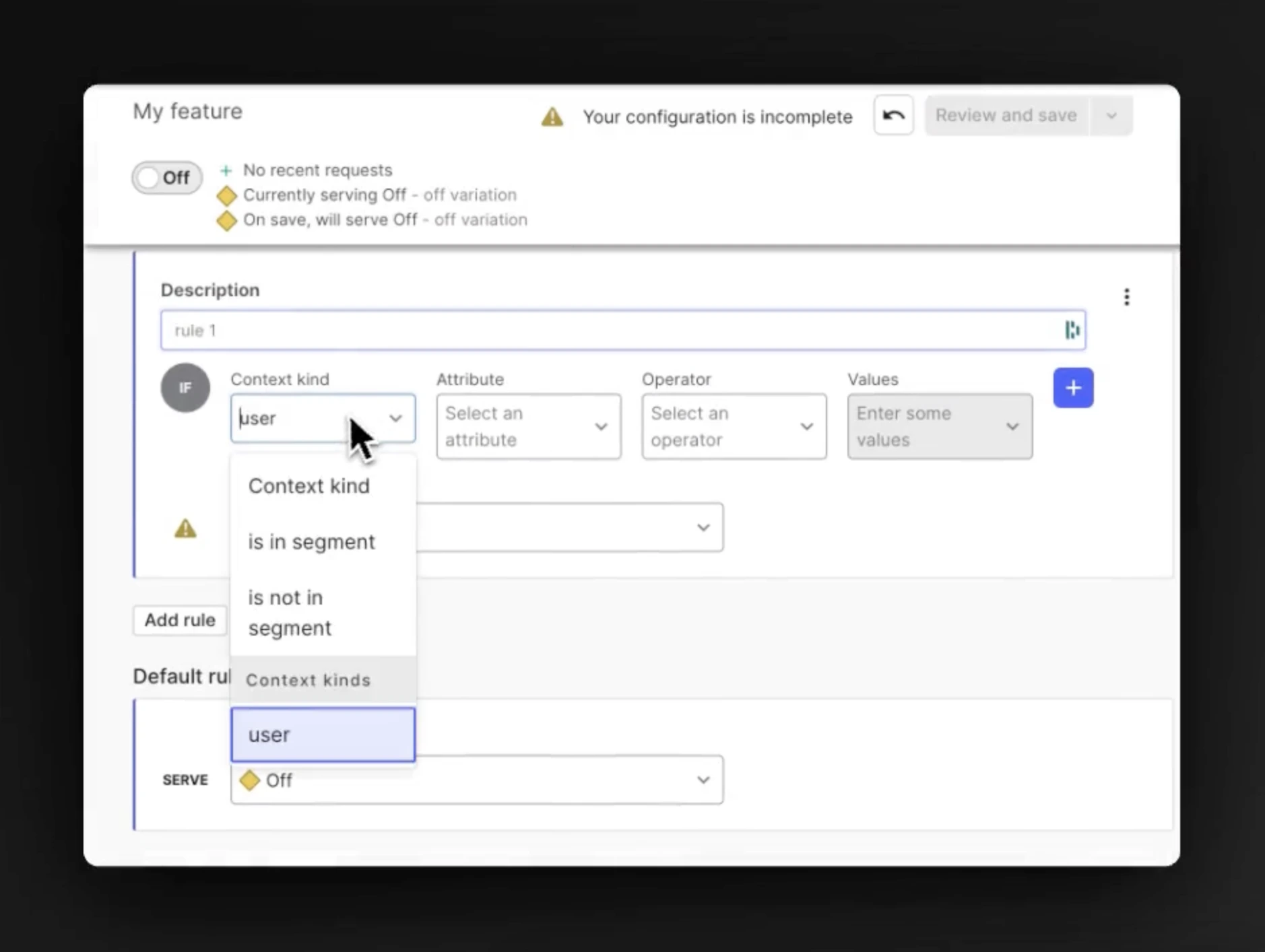
We've gathered user feedback on two key aspects of LaunchDarkly: ease of use and setup time. The higher the rating, the more favorable the experience, giving us a clear indication of how smoothly the platform works in practice. Next, we’ll review how LaunchDarkly performed in these areas based on user input.
Here is what people who are using LaunchDarkly think about the product (the higher the better):
- Setup time: 4.1/5
- Ease of use: 3.5/5
Pricing
In terms of pricing, LaunchDarkly tends to be on the higher end, with costs rising quickly as your team size grows. While it offers a range of powerful features, the price may be a limiting factor for smaller teams or projects. To give a clearer picture, we’ve listed a few pricing examples based on various team sizes to illustrate how expenses can scale with growth.
LaunchDarkly is not the cheapest option from this list, especially for larger teams, the price increase can be steep. Here are some prices to give you an idea:
- Price for 5 seats: $500/yr
- Price for 10 seats: $2 000/yr
Got to LaunchDarkly pricing page
 #4 Flagsmith
#4 Flagsmith
Next, we have Flagsmith, which is a strong option for managing feature flags in Java applications. We'll take a closer look at what Flagsmith brings to the table in terms of features and pricing, helping you determine if it fits your project needs.
Features
Flagsmith offers all the essential features you’d expect from a feature flagging service, making it a reliable choice for most Java projects. Its lower-tier plans include key functionalities like feature toggling, ensuring that even teams on a budget can effectively manage their feature deployments.
For those who need more advanced capabilities, however, some features are reserved for the higher-tier plans. Options like MFA, unlimited projects or flag scheduling start at $540 a year.
Some other features of Flagsmith are only available on the highest plan and will require a call with a sales representative (eg. reviews, custom roles and audit log).
Ease of use
To help you compare the ease of use between the tools, we’re recording a video for each one showing how to roll out a feature for 20% of French users. These videos will give you a hands-on look at how Flagsmith and the other platforms operate, making it easier to evaluate their strengths and weaknesses.
Unlike what you might have heard, it is actually not that hard to setup a flag in Flagsmith.
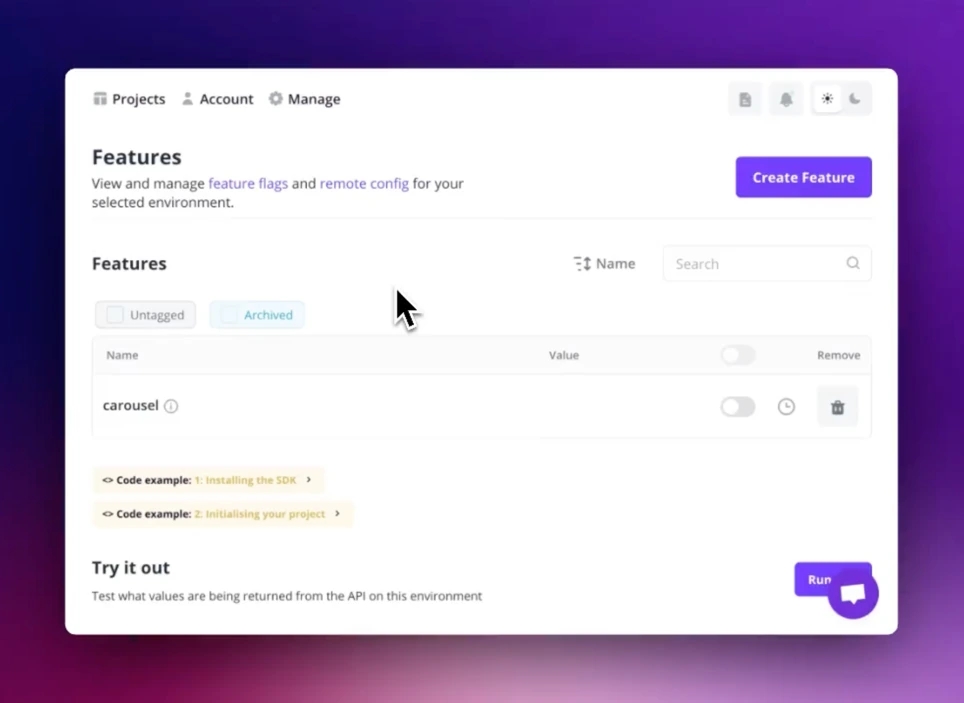
To help evaluate Flagsmith's performance, we collected user ratings for both ease of use and setup time. These ratings, where higher numbers reflect better experiences, give a clear picture of how simple it is to get up and running with the platform and how user-friendly it is. Let’s dive into the results to see how Flagsmith stacks up.
Here is what people who are using Flagsmith think about the product (the higher the better):
- Setup time: 4.2/5
- Ease of use: 3.4/5
Pricing
Flagsmith isn’t the most budget-friendly tool, and the price can climb significantly as the size of your team increases. To give you a sense of how costs can escalate, we’ve included some example pricing based on team size to help you evaluate whether Flagsmith fits your financial requirements.
Flagsmith is not the cheapest option from this list, especially for larger teams, the price increase can be steep. Here are some prices to give you an idea:
- Price for 5 seats: $$$
Unlisted pricing - Price for 10 seats: $$$
Unlisted pricing
 #5 Split
#5 Split
Split is the next feature flagging tool we'll explore. Designed with Java developers in mind, Split offers a range of functionalities that make it a compelling choice. In the upcoming sections, we'll delve into its features and pricing to better understand its value.
Features
Split provides a comprehensive set of basic features that make it a solid choice for managing feature flags in Java projects. With its core offerings, you can easily toggle features on and off. These essential tools are available even on the lower-tier plans, making Split accessible to teams that need robust feature flagging capabilities without breaking the bank.
However, for those seeking more advanced functionalities, you'll need to opt for one of the more expensive plans. Such as unlimited projects, flag scheduling, custom roles or remote config that start at $7 200 a year and audit log that start at $3 960 a year.
Some other features of Split are only available on the highest plan and will require a call with a sales representative (eg. reviews).
Ease of use
We’ve recorded a video for each tool on our list to demonstrate their UI where we release a feature for 20% of French users. This will allow you to directly compare how Split handles feature rollouts and how it might fit your workflow.
Split takes a bit of time to get used to, but once you get the hang of it you can update flags pretty easily.

To provide more insight into Split's usability, we collected user ratings in two areas: ease of use and setup time. A higher rating indicates a smoother experience, helping gauge how quickly teams can adopt the platform and how intuitive it is. Let’s take a closer look at these ratings to see how Split measures up.
Here is what people who are using Split think about the product (the higher the better):
- Setup time: 3.9/5
- Ease of use: 3.5/5
Pricing
Split isn’t the cheapest option available, and its pricing can increase rapidly as your team size expands. To provide some clarity, we’ve outlined a few example price points based on different team sizes, so you can better understand how Split’s pricing might fit your needs.
Split is not the cheapest option from this list, especially for larger teams, the price increase can be steep. Here are some prices to give you an idea:
- Price for 5 seats: $3 960/yr
- Price for 10 seats: $3 960/yr
Conclusion
In conclusion, we’ve explored how 5 different feature flag tools stack up in terms of features, ease of use, and pricing. The videos included in this article served to highlight how each tool performs in practice, offering a clearer perspective on their usability. Your choice will ultimately hinge on what you value most—be it cost-effectiveness, advanced functionalities, or user-friendly design.

